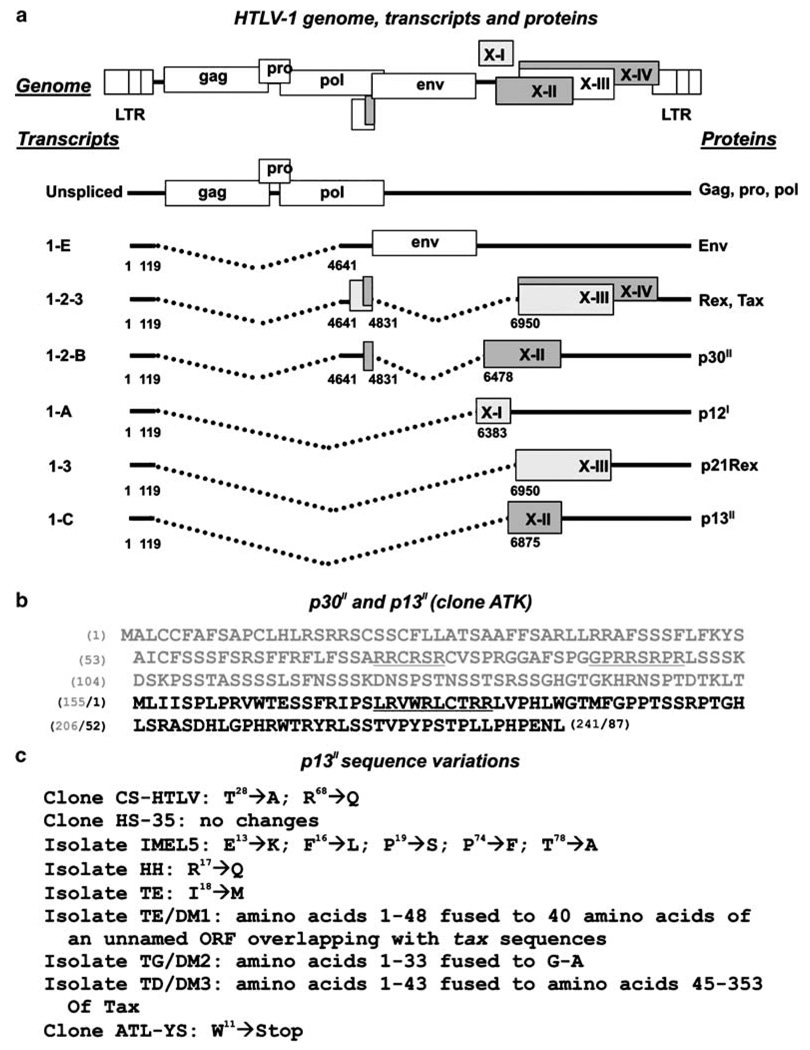Figure 1.
Expression of the x-II ORF of HTLV-1. (a) HTLV-1 genome, ORFs, transcripts, and protein products are shown. The exon boundaries are indicated below each transcript, with nucleotide numbering starting at the first nucleotide in the R region of the LTR. (b) Protein sequences of p30II (expressed from mRNA 1-2-B; in grey letters) and p13II (expressed from mRNA 1-C; in black letters) coded by HTLV-1 molecular clone ATK are shown. The p13II sequence spans nucleotides 6936–7197 and corresponds to the C-terminal 87 amino acids of p30II. The bipartite NLS of p30II and the MTS of p13II are underlined. (c) Differences in the p13II amino-acid sequence of the indicated viruses compared to ATK p13II (see b) are shown. ATK and ATL-YS are proviruses cloned directly from peripheral blood lymphocytes of Japanese ATLL patients.3,4 CS-HTLV is a full-length, infectious provirus derived from a North American ATLL patient.5 HS-35 is a molecular clone obtained from an infected patient of Caribbean origin.6 IMEL5 is an HTLV-1 isolate from a healthy Melanesian Solomon Islander.7 Isolates HH, TE, TG and TD are from healthy carriers (HH) and HAM/TSP patients;8,9 changes are based on published analyses of the portion of exon 3 (the second Tax/Rex exon) overlapping with exon C

